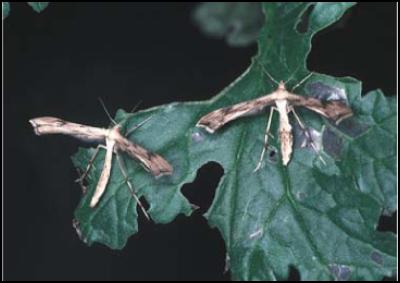Flying squad takes over in beetle battle
Flying squad takes over in beetle battle against ragwort

The wild West Coast is one of the last frontiers for ragwort – but a flying squad of new insects is being sent in this week, in the hope it can destroy the noxious weed once and for all.
Ragwort (Senecio jacobaea) replaces pasture and contains toxins that can cause fatal liver damage to cattle, horses, goats and even deer. It reduces butterfat, milk and meat production, and can taint the flavour of milk, meat and even honey.
An arsenal of insects, most notably the ragwort flea beetle, has largely won the battle in most parts of the country. But the beetle has failed to thrive in areas of high rainfall and intensive dairying such as the West Coast, Southland, and Otago.
At high noon on Friday, about 300 ragwort plume moths and ragwort crown-boring moths will be released onto a farm at Inchbonnie, near Jacksons on the Arthur’s Pass. It is hoped that these moths will perform well and go on to be used in other ragwort-plagued parts of the country.
The release is the culmination of three years work by the West Coast Ragwort Control Trust, who will continue to rear and release the insects on the West Coast.
Landcare Research identified the two insects as being potentially useful, ensured that they would eat only ragwort, and reared the insects for initial release. Landcare Research plans to begin a national rearing and release programme in conjunction with regional councils in other ragwort-affected parts of the country.
Landcare Research weed researcher Hugh Gourlay says the plume moth in particular has almost wiped out ragwort in Tasmania and Victoria, in similar climates to the West Coast.
“The plume moth attacks the roots and kills plants, while the crown-boring moth attacks both leaves and roots, reducing plant growth and seed production.
“Both insects have several generations in one year, so chances are high that they will establish and thrive.
“Both moths are specific to ragwort – in other words, they are unlikely to eat anything else.”
The moths will be released at Inchbonnie (west of Jacksons, south of Lake Brunner) at 12pm, Friday the 17th of March. Contact Hugh Gourlay for directions.
ENDS


 ChargeNet: EV infrastructure co-funding model welcomed
ChargeNet: EV infrastructure co-funding model welcomed NZ Trucking Association: TruckSafe New Zealand Launches | A Game-Changer For Heavy Vehicle Safety And Compliance
NZ Trucking Association: TruckSafe New Zealand Launches | A Game-Changer For Heavy Vehicle Safety And Compliance Gaurav Mittal, IMI: How Can We Balance AI’s Potential And Ethical Challenges?
Gaurav Mittal, IMI: How Can We Balance AI’s Potential And Ethical Challenges? Science Media Centre: Several US-based Environmental Science Databases To Be Taken Down – Expert Reaction
Science Media Centre: Several US-based Environmental Science Databases To Be Taken Down – Expert Reaction Consumer NZ: Despite Low Confidence In Government Efforts, People Want Urgent Action To Lower Grocery Bills
Consumer NZ: Despite Low Confidence In Government Efforts, People Want Urgent Action To Lower Grocery Bills NZ Banking Association: Banks Step Up Customer Scam Protections And Compensation
NZ Banking Association: Banks Step Up Customer Scam Protections And Compensation